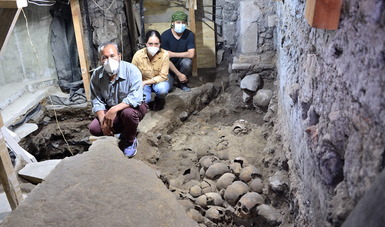
Last month, archaeologists in Mexico City unearthed the eastern façade of a tower of skulls near the 700-year-old site of the Templo Mayor, the main temple in the former Aztec capital city of Tenochtitlan. It’s a morbidly sensational find, but it’s also a potential treasure trove of information about the people who died at Tenochtitlan in the city’s final centuries. Here’s what the skulls in the tower could tell us if we ask them—and why we'd have to ask very carefully.
Archaeologists found 119 skulls built into the structure, a morbid addition to the 484 skulls found on the northeast side of the tower, which archaeologists rediscovered in 2015. Since 2015, excavations have reached 3.5 meters below modern street level, into the layers of ground once trod by Aztec priests, onlookers, and sacrificial victims. From those excavations, we now know that the 4.7 meter (15.4ft) tall tower was built in at least three phases, starting in the 15th century.
The nearby Templo Mayor once housed important shrines to the war god Huitzilopochtli and the rain and farming god Tlaloc. Many of the victims sacrificed to the two gods probably ended up as building blocks for the tower, properly known as the Huei Tzompantli, nearby. A tzompantli is a wooden scaffold for displaying skulls (exactly as the name suggests if you happen to speak Nahuatl; the word means something along the lines of “skull rack” or “wall of skulls”). The temple district of Tenochtitlan once boasted at least seven of them.
No comments:
Post a Comment